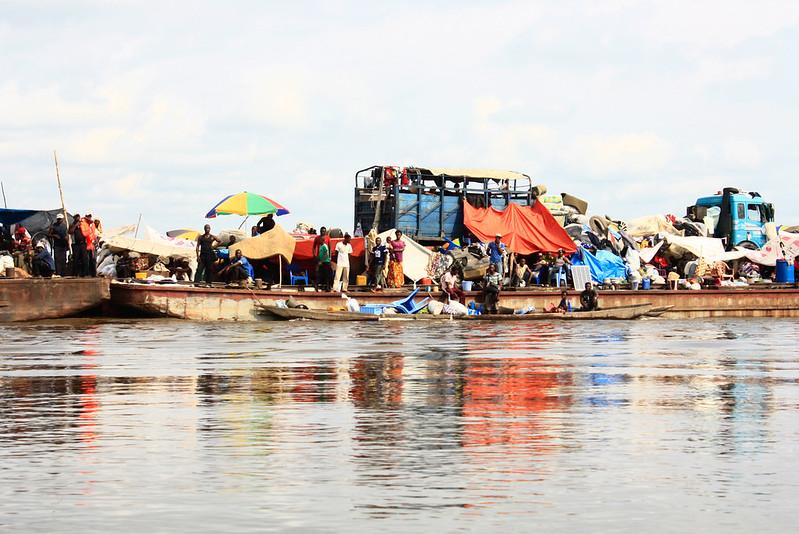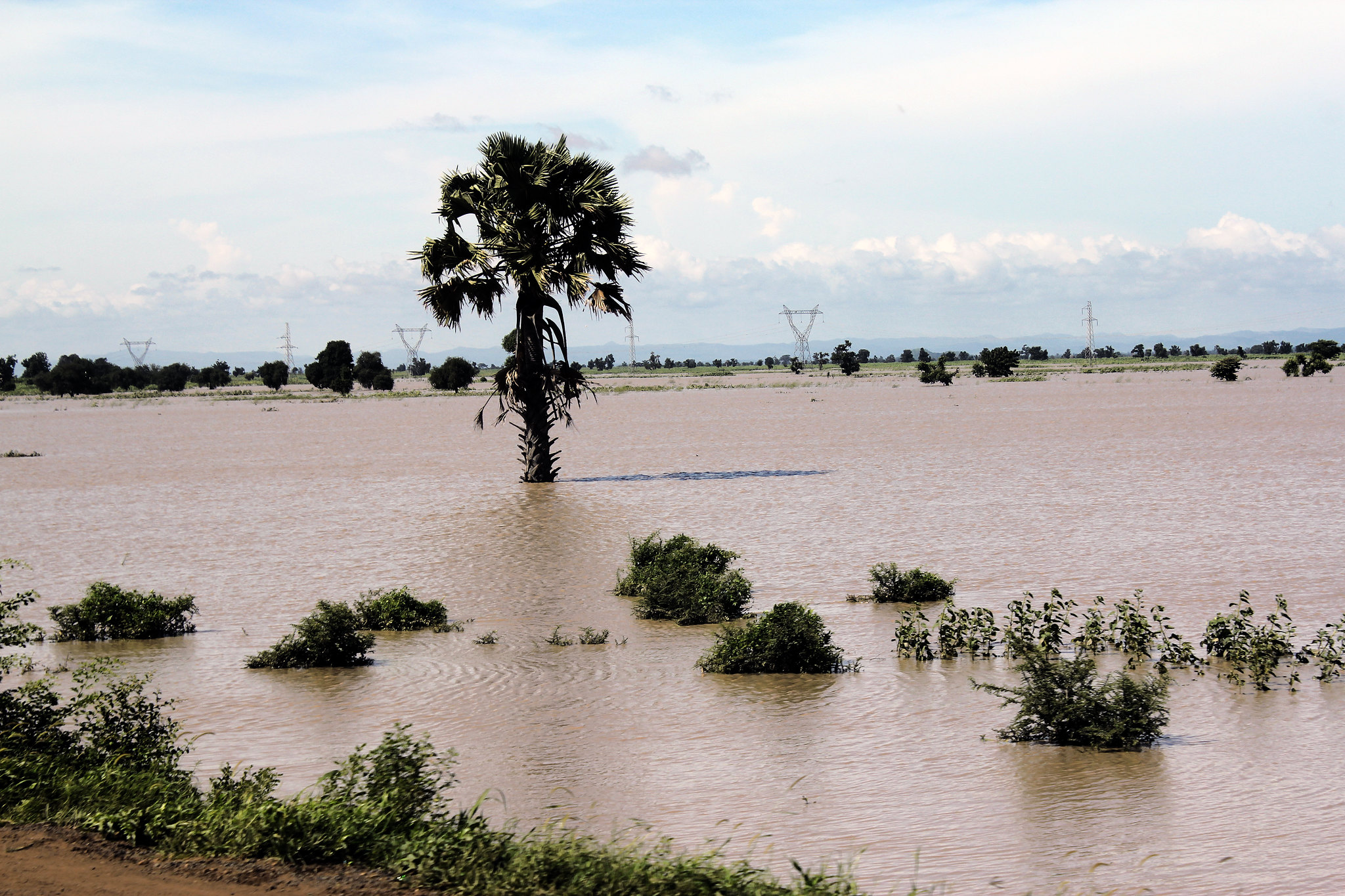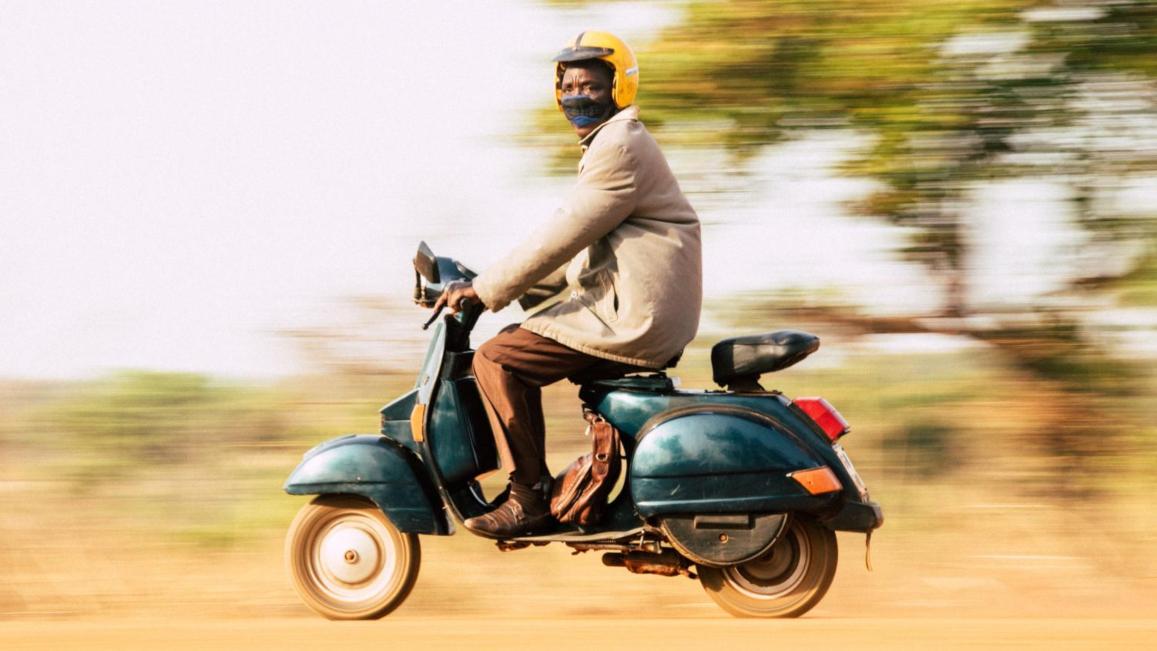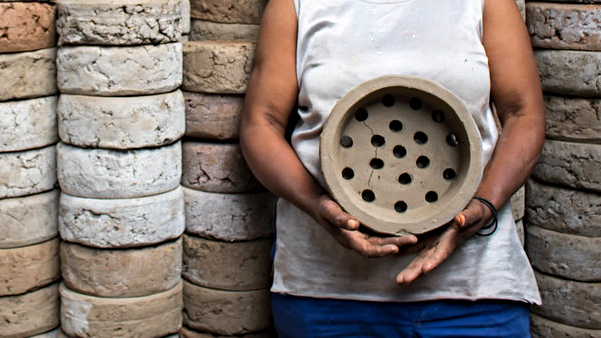Bauma Johnson describes the unexpected challenges of collecting data on households’ water usage in Goma, the Democratic Republic of the Congo, and how a ‘kitchen utensils’ methodology confronted him with families fearful of karuho poisoning.
This post forms part of a series exploring an ongoing research project into water governance in Goma, the Democratic Republic of Congo.
Over the past year, I have been collecting data on households’ social networks and financial management as part of a research project examining water governance in Goma, the Democratic Republic of Congo (DRC). The project aims to better understand how households of low and moderate socioeconomic status cope in an insecure environment and to use the information to help others improve their development interventions.
The project’s results will be used for a water, sanitation and hygiene (WASH) programme, which will reach up to 1 million beneficiaries in Goma and Bukavu through their improved access and promotion. The overall goal is to decrease diarrhoea rates among children under five through an integrated approach improving infrastructure, promoting effective behaviour change, reinforcing market systems for WASH services and improving governance and community accountability of these systems.
Our research team was recently approached by the London School of Hygiene and Tropical Medicine to help them design and test a methodology for understanding households’ water usages. Although this was not originally part of our project, we agreed to asking the households we work with whether they would take part in this short exercise. We were also interested to learn more about the daily lives of the households under study.
Following much discussion, our team devised what we call the ‘masahani’ (kitchen utensils) methodology. Simply put, it consists of asking households to describe their water usage using containers and implements readily available throughout Goma. Follow up questions are then asked to validate our answers and observations, and to ensure the researchers did not miss any key information. Importantly, this method does not impose alien measuring methods on the households and largely allows them to carry on with their days undisturbed.
Shortly after beginning our work an unexpected problem arose during our visits to two of the participating households in the neighbourhood of Bujovu. There, most households get water from a few large privately-owned tanks filled two or three times a day by trucks from Lake Kivu. The water is widely considered unfit for consumption and is expensive compared to elsewhere in the city at roughly 150–200 FC per 20 litre can.
The problem concerned our requests to see the receptacles that the households use to carry water from the tanks home, to store it and to use it for consumption, cleaning and washing. They feared that our team members or other people we know may poison them using karuho!
The word ‘karuho’ originated in Kinyarwanda from the word uruho, which means a calabash (a traditional cup) used to drink either water or local wine. Karuho is a poison made by combining rare plants, the skin and the heads of chameleons, and toads’ skin. The administrators of this poison are generally thought to be haunted by an excessive jealousy that leads them to this despicable act. The results can be anything from prolonged sickness to the deaths of their rivals.
Karuho first became known in the DRC (then called Zaire) in the 1960s. Then it was rumoured that ‘Barthos’ Barthélemy Bisengimana Rwema, the Rwandan born Director of the Cabinet of President Mobutu, used it to eliminate his boss’ enemies. However, the poison’s use in Goma skyrocketed in 1994 after the arrival of Rwandan refugees feeling the genocide. They passed the recipe to the Congolese and it is now commonplace to suspect karuho poisoning when doctors cannot diagnose an illness. The poison’s use is so widespread and feared that a conference discussing the issue was recently held in the University of Kinshasa.
According to my wife’s brother, the villages of Ntamugenga and Rugarari in nearby Rutshuru territory are particularly affected, with multiple recent deaths. Kahuro has reportedly been used by those jealous of others’ wealth, land or the educational attainments of their children. It has also been used by ambitious people to remove those preventing them from reaching their goals, such as obtaining a chieftainship or winning long-running court cases.
Returning to our two households, after much discussion we uncovered that members had previously been poisoned and were now extra cautious with utensils that are used for drinking or eating. They were like people that had been bitten by snakes and now fear sticks in the grass. To address this, we agreed that they would only show us the utensils they used to carry and store water from a short distance, and we strictly observed this improvised rule.
Over time, however, the households have learnt to trust our researchers and it is no longer a problem to touch their utensils. This bond has been built through repeated visits, both for further data collection and simply for chatting. Our researchers also make sure to visit when the households have problems, such as burglaries or illnesses, and to commiserate with those affected.
So, what have our brushes with karuho taught us? First, what may seem like a simple methodology will likely be tested in ways researchers cannot imagine once they enter the field. Second, it is always paramount to respect the fears of those giving their time up to participate in research projects. And, lastly, researchers must remain aware that through no bad intentions of their own they may end up in hot water, or even criminalise themselves. Nuanced understandings of the contexts researchers work in, and slowly gaining the trust of those they interact with, are the best cures for such poisonous problems.
The research project, examining water governance in Goma, DRC, is jointly funded by the Department of International Development (DFID) and the Centre for Public Authority and International Development (CPAID) through Mercy Corp’s IMAGINE programme.
Photo: Alba Saray Pérez Terán – CIFOR.






Karuho is an epiphenomenon in North Kivu, mostly in Goma. Today every unexplained health condition is called ‘Karuho’. In my own interviews related to health of women during pregnancy and the perinatal period, Karuho was mentioned several times by both men and women separately when it was not part of the subject discussed (Goma, Karuba and Nyiragongo). No one from my informants tried to say what Karuho was made with (it would be suspicious) or where it originated.
Trying to ignore ‘Karuho’ is denying a well recognized social problem.
Is it something from Rwanda? Probably because first used by the Rwandophone populations of the Kivus but there is a need of researching about it in Rwanda to better understand the origin and the current beliefs and practices associated.